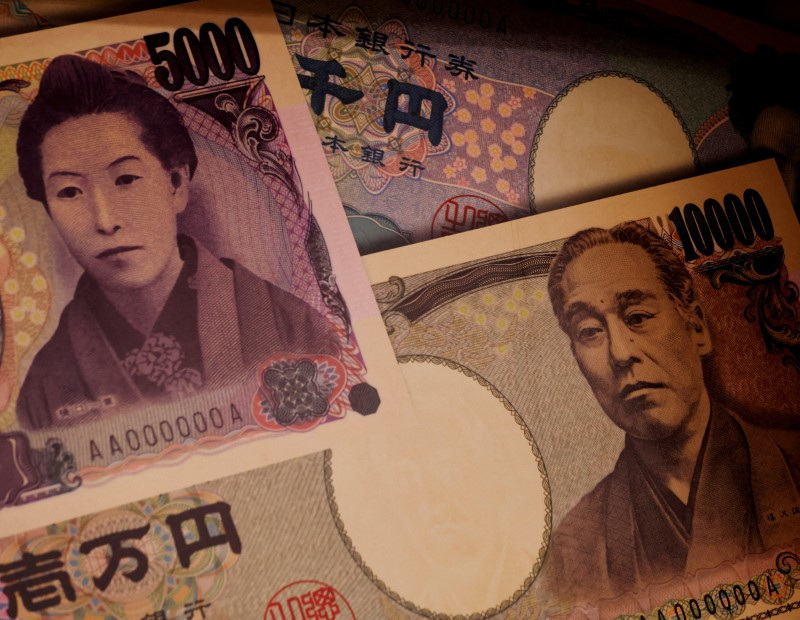Yen drops against dollar after US jobless claims fall more than expected By Reuters

By Hannah Lang and Amanda Cooper
NEW YORK/LONDON (Reuters) -The yen fell against the dollar on Thursday after new U.S. labor market data showed that unemployment benefits fell more than expected last week, easing fears of an imminent recession.
The yen’s slide follows a sharp drop the day before in a volatile week in which investors have had to digest the unwinding of popular carry trades and how Japanese monetary policy might evolve.
Initial jobless claims fell to a seasonally adjusted 233,000 for the week ended Aug. 3, the Labor Department said Thursday, suggesting fears that the labor market is unravelling were overblown.
“The talk of an imminent recession seems wide of the mark,” said Marc Chandler, chief market strategist at Bannockburn Global Forex.
The yen was last down 0.46% at 147.340, having slid 1.6% on Wednesday, after the Bank of Japan’s Deputy Governor Shinichi Uchida played down the chance of a near-term hike in interest rates that would typically boost the currency.
The sharp moves in the yen pushed the , which measures the U.S. currency against six others including the yen, up to 103.38, above Monday’s seven-month low of 102.15.
The yen started the week by scaling a seven-month high of 141.675 per dollar, a far cry from the 38-year lows where it traded in early July, after soft U.S. jobs data last week stoked recession worries and roiled investors.
A surprise rate hike from the BOJ last week also forced investors to bail out of carry trades, in which they borrow the yen at low rates to invest in dollar-priced assets for higher returns. This unwinding gave the yen a boost.
A summary of opinions voiced at the BOJ’s July policy meeting showed on Thursday that some board members cited a need to keep raising interest rates, with one saying they should eventually be increased to at least around 1%.
The contrasting opinions from the summary and Uchida on whether the BOJ will continue to raise rates, or pause as a result of market volatility, underscores the delicate task facing the central bank and will likely keep investors skittish.
“As the market pulls back from the edge of the brink … U.S. interest rates have firmed up, and I think this is going to give the dollar/yen a little bit more of a lift,” said Chandler.
Some analysts believe this unwinding in the carry trade may have further to run, and is possibly only halfway there, which could add to volatility.
Even if the U.S. Federal Reserve did deliver a steep rate cut, as most traders are expecting in September, and the BOJ another increase, there would still be an incentive to use the yen to fund other trades.
“There could be new yen shorts. In the same way that people were bargain-hunting in the S&P on Tuesday, they were very likely people bargain-hunting in dollar/yen,” Rabobank strategist Jane Foley said.
“There will be people out there who don’t see a reason to expect it to unwind further and that’s what makes a market.”
The Swiss franc, another currency that was used to fund carry trades and that benefited from the unwinding momentum earlier this week, was down 0.4% at 0.856569 per dollar, after dropping more than 1% on Wednesday.
The euro was down 0.22% at $1.0898, while sterling was up 0.24% at $1.272.
Investor focus will now be on the U.S. consumer price inflation report for July due next week, as well as comments by Fed Chair Jerome Powell at the central bank’s Jackson Hole Economic Policy Symposium on Aug. 22-24.

“Investors need to brace for a bumpy ride,” Vasu Menon, managing director of investment strategy at OCBC, said.
The Australian dollar rose 0.87% to $0.658, while the New Zealand dollar was up 0.17% at $0.600. [AUD/]


